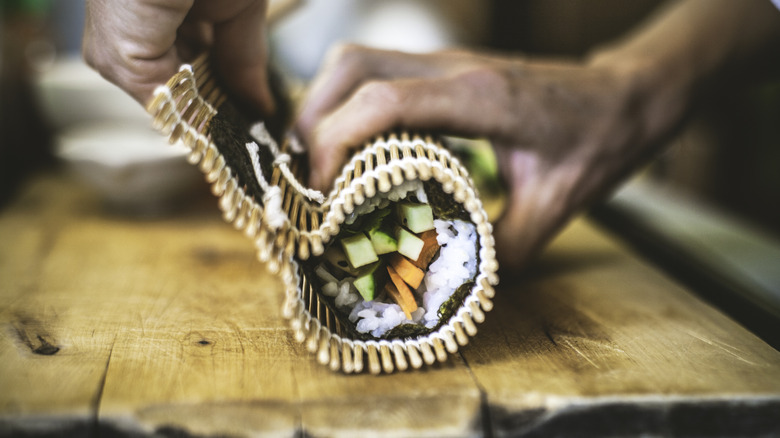The One Type Of Fish You Never See In Sushi Rolls (And Why)
Walk into any sushi restaurant these days and you'll be bombarded with choices. From classic bluefin tuna, hamachi, and unagi, to maybe some new varieties of fish you've never heard of, a night of dining omakase can be a real adventure. One thing you're probably never going to see in your next sushi roll, however, is wild-caught salmon.
While farm-raised salmon gets a bit of a bad rap sometimes, it's actually much safer to eat raw than wild-caught fish because of the danger of contracting parasites. Farm-raised salmon is usually fed a diet of pellets, while farm-raised fish can eat whatever they want in the wild, plus they move from salt to freshwater, so there is a big risk that they can carry tapeworms. Remember that sushi salmon is served basically raw, so anything living in the salmon can be passed on to you if the food isn't cooked, so in this case, sushi chefs prefer to go with farm-raised options to be on the safe side.
Of course, salmon farming is not an exact science when it comes to preventing parasites, it just lowers the risk of infection. However, one study found that farm-raised salmon showcased no infections whatsoever, while its wild-caught counterpart showed a 65-100% parasite infection rate. Despite this, sushi salmon is almost always frozen before it's served, which makes it a lot safer to eat than a fish that's been plucked right out of the water.
Most salmon is frozen to be safe
While it's nice to believe that the sushi on your plate was taken out of the ocean hours before you eat it, the fact is, most of the fish we eat was frozen at sea or on the farm long before it got to our supermarket or restaurant. But that's actually a good thing, especially when it comes to fish that are susceptible to parasites like salmon. In fact, in many places, it's required by law to freeze any fish that's intended to be served raw, like in a sushi roll. In Minnesota, for example, according to the Department of Health, fish needs to be frozen to at least -4 degrees Fahrenheit and held in the freezer for seven days before it's considered safe to eat. If your sushi chef has a commercial freezer that can achieve colder temperatures the fish doesn't have to be frozen as long, but most standard freezers can only go as low as 0 degrees Fahrenheit.
Whenever you eat any type of raw food like oysters, steak tartare, or yes, sushi rolls and pieces of nigiri, you're assuming a certain level of risk. But when it comes to salmon, as long as it's farm-raised, your risk of getting sick from parasites is pretty low. Even Costco salmon is safe to use for sushi. So you don't have to worry if you're ordering the right fish when it comes to sushi, just try to choose anything that's designated as "sushi grade."

